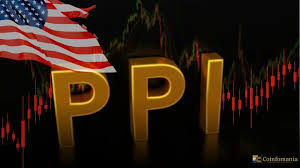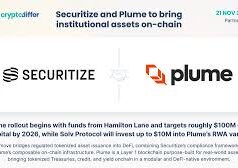The PPI Surprise: Inflation Heats Up
A hotter-than-expected jump
The US Bureau of Labor Statistics dropped a bombshell this week: the July 2025 PPI, which measures the average change in prices received by domestic producers for their goods and services, rose 0.9% month-over-month, pushing the annual rate to 3.3%. Economists were caught off guard, as forecasts hovered around a modest 0.2% monthly increase and a 2.5% annual rate. This marks the largest monthly PPI gain since June 2022, signaling that inflationary pressures are far from tamed.
What’s behind the spike?
So, what’s driving this surge? The data points to volatile food and energy categories, with energy prices up 0.9% and food prices climbing 1.4% in July. But it’s not just the usual suspects—core PPI, which strips out food and energy, also rose 0.9%, with an annual rate of 3.7%. This suggests broader price pressures across industries, from manufacturing to services. Some analysts argue producers are absorbing higher costs, possibly due to tariffs or supply chain constraints, which could eventually trickle down to consumers.
Doug Colkitt, a contributor at Initial Fogo, noted, “The sharp reversal is a reminder that even the strongest crypto rallies remain tethered to macro forces—especially when inflation surprises force investors to rethink rate-cut timelines.” This PPI jump has markets questioning whether the Federal Reserve will stick to its rate-cut plans for September, with some traders adjusting expectations for tighter monetary policy.
Why this shift grabs attention
This PPI spike isn’t just a number crunchers’ concern—it’s a signal that inflation might be stickier than hoped. For everyday folks, this could mean higher prices for goods down the line, from groceries to electronics. For investors, it’s a wake-up call that macroeconomic forces are still volatile. The higher-than-expected PPI has already rattled markets, contributing to a 5% drop in Ethereum’s price on Thursday, August 14, 2025, as profit-taking kicked in. The question now is whether this is a blip or a sign of more persistent inflationary pressure.
Ethereum ETFs: A $2.9 Billion Vote of Confidence
Riding the crypto wave
While inflation data stirred the pot, Ethereum spot ETFs have been on a tear, pulling in $2.9 billion in net inflows over a 14-week streak ending August 14, 2025. This follows a record-breaking July, where these ETFs saw $5.43 billion in inflows, a 369% jump from June’s $1.16 billion. The cumulative net inflows for US spot Ethereum ETFs now stand at $11.36 billion, with total net assets reaching $27.6 billion, or 4.77% of Ethereum’s market cap.
BlackRock’s iShares Ethereum Trust (ETHA) has been the heavyweight, raking in $10.81 billion in cumulative inflows, while Fidelity’s FETH added $2.8 billion. Even Grayscale’s ETHE, despite $4.29 billion in outflows since its conversion, remains a major player with $5.11 billion in net assets. This sustained inflow streak—14 weeks and counting—shows institutional investors are doubling down on Ethereum.
Fueling Ethereum’s price surge
The ETF inflows have been a rocket booster for Ethereum’s price, which climbed 67% in July, hitting $3,814 by month-end and peaking above $4,700 in early August before a recent 5% correction. On August 11, 2025, spot Ether ETFs recorded a single-day record of $1.02 billion in net inflows, with ETHA and FETH leading the charge at $639.8 million and $276.9 million, respectively. This influx reflects growing institutional appetite, with analysts pointing to regulatory clarity—like the SEC’s stance that liquid staking tokens aren’t securities—as a catalyst for renewed interest.
One X post captured the sentiment: “A lot of selling has been absorbed at these levels, and treasury companies are still in a race to acquire.” BitMine Immersion Technologies, for instance, recently boosted its Ethereum holdings to 1.15 million ETH, worth about $5 billion, and filed to expand its at-the-market equity program to $24.5 billion to buy more.
The bigger picture for crypto
These ETF inflows aren’t just about Ethereum—they signal a maturing crypto market. Spot Ethereum ETFs, launched a year ago, have now amassed $8.64 billion in total net inflows, with assets under management at $19.68 billion. The 48% returns posted by nine Ethereum ETFs in July outshone most other nonleveraged ETFs, per FactSet data. This performance, coupled with Bitcoin ETFs pulling in $6.3 billion in July, shows crypto is carving out a bigger slice of the institutional investment pie.
Connecting the Dots: Inflation and Crypto’s Dance
How PPI impacts crypto markets
The PPI spike and Ethereum ETF inflows aren’t isolated events—they’re intertwined. The hotter-than-expected PPI data triggered a wave of profit-taking across crypto markets, with Ethereum dropping 5% on August 14, 2025, and $346 million in futures liquidations, mostly long positions. Investors, spooked by the prospect of delayed Fed rate cuts, pulled back from risk assets like crypto. Yet, Ethereum’s ETF inflows remained resilient, suggesting institutional investors see long-term value despite short-term volatility.
The institutional edge
Why are institutions piling into Ethereum ETFs? For one, they offer a regulated way to gain exposure to crypto without the hassle of managing wallets or private keys. BlackRock, Fidelity, and others provide a secure, familiar vehicle for traditional investors, with low fees (0.15% to 2.5%) compared to direct crypto trading. Plus, Ethereum’s dominance in decentralized finance (DeFi), with a 61% market share, makes it a compelling bet for those eyeing blockchain’s future.
Looking Ahead: What’s on the Horizon?
Navigating inflation’s next moves
The PPI’s 3.3% annual rate has markets on edge. If inflation stays sticky, the Fed might delay or scale back rate cuts, keeping pressure on risk assets like stocks and crypto. Consumers could feel the pinch as producer costs pass through to retail prices. Investors will be watching August’s Consumer Price Index (CPI), which hit 2.7% in July, for clues on whether this PPI spike is a trend or an outlier.
Ethereum’s path forward
For Ethereum, the ETF inflow streak is a bullish sign, but challenges loom. The recent validator exit queue spike—727,000 ETH worth $3.2 billion—hints at profit-taking or redeployment to other DeFi protocols. If Ethereum holds its $4,500 support level, analysts see a path to retest its all-time high of $4,868 or even hit $5,000. Regulatory developments, like potential ETF staking options, could further boost inflows.
Wrapping It Up: A Dynamic Economic Moment
The July PPI surge and Ethereum ETF inflows paint a picture of an economy at a crossroads. Inflation’s unexpected climb is a reminder that macroeconomic forces can shift quickly, impacting everything from grocery bills to crypto portfolios. Meanwhile, Ethereum’s ETF success shows crypto’s growing legitimacy, with institutions betting big on its future. As we move forward, keeping an eye on inflation data and ETF flows will be key to understanding where markets—and our wallets—are headed.
Sources:
- US Bureau of Labor Statistics, Producer Price Index, August 2025
- SoSoValue Ethereum Spot ETF Dashboard, August 2025
- CoinEdition, “Spot Ethereum ETFs Attract a Record $5.41 Billion in July,” July 30, 2025
- FXStreet, “Ethereum Price Forecast,” August 15, 2025
- Holder.io, “Spot Ethereum ETFs Achieve Record $5.43 Billion Inflows in July,” August 2, 2025
- Gemini Weekly Market Update, August 14, 2025
- ETF.com, “Ethereum ETFs Lead July’s Top ETF Performers,” August 4, 2025
- CoinGape, “US Spot Ethereum ETF Turn 1 with $8.64 Billion Net Inflow,” 2025
- X posts on market sentiment, August 2025



























